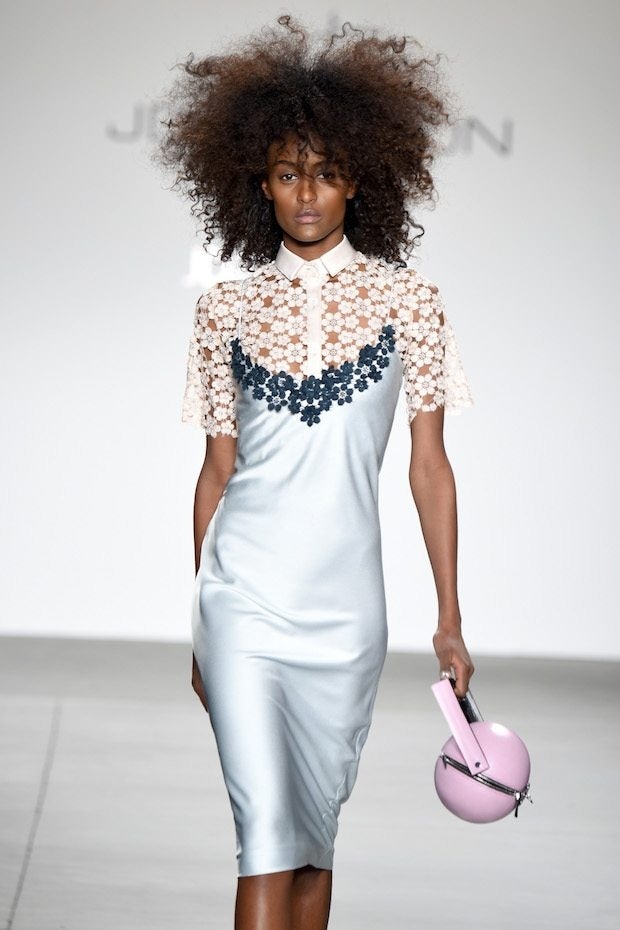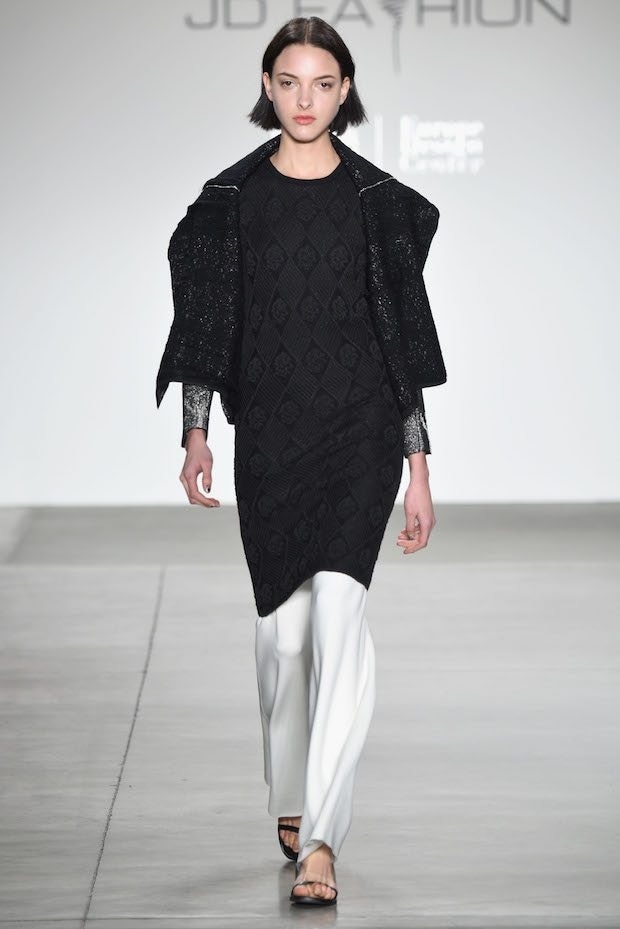
When Chinese e-commerce giant JD.com held its recent New York Fashion Week runway show on February 17, a group of up-and-coming designers from China had a big opportunity to showcase their collections on the international stage. But the event was also aimed at catching the attention of U.S. brands, which JD.com hopes to sign to its site as it markets itself as a global shopping platform for consumers in China.
Chinese labels chosen for the show included Alicia Lee, Gioia Pan, Ruiping Guo, Chi Zhang, and Cahill+ (by international soccer star Tim Cahill, who currently plays for the Shanghai Shenhua soccer team). One key aim of the presentation was “bring the unique creations of leading up-and-coming designers in China’s fashion scene to the global stage,” says Lijun Xin, President of JD.com’s Apparel and Home Furnishing Business Unit. “Doing so helps raise awareness and strengthens China’s growing fashion savvy.”

The New York Fashion Week cachet the brands receive could resonate not only with U.S. buyers, but also with Chinese consumers. Designer Chi Zhang says that he hopes his participation in the event will “make the Chinese customers feel proud of themselves,” adding, “China has been on the worldwide fashion runway, and now, it is time for all the Chinese customers to advocate for their own fashion brand.” A growing domestic interest in Chinese labels can be a big benefit for JD.com, as Xin states that “many of the new collections displayed at our runway show can be ordered from our website immediately, only for JD.com customers.”
But spotlighting the Chinese fashion was only one of two goals for hosting the show, says Xin. An equal—or perhaps even more important—aim was to highlight the launch of JD.com’s new U.S. Fashion Mall that coincided with the runway show. Prior to the show, JD.com held an info session on the new e-mall, which has signed a significant group of American brands targeting China’s rising middle class including Calvin Klein, GUESS, Paul Frank, Under Armour, Nine West, Converse, New Balance, Reebok, Steve Madden, Vans, and more.

As Chinese online shoppers show a growing interest in ordering from abroad, both JD.com and its competitor Alibaba have been launching international platforms to allow foreign brands to ship to China through their special logistics setup. Prior to the launch of its U.S. Fashion Mall, JD.com announced its new Italian Fashion Mall through a Milan Fashion Week show. Both are part of the site’s JD Worldwide platform that was created in April last year, and also features a “Korean Mall” with partners including Lotte. JD Worldwide faces competition from Alibaba’s Tmall, which launched Tmall Global in June last year with 11 different “country pavilions.”

In addition to using the event to highlight 132 million active Chinese users on the platform, JD.com is also enticing foreign brands by offering support with the complicated logistics of international shipping to China. “We lower the barrier of entry to the China market for international brands who partner with us,” says Xin. The company is also highlight its “big data resources” to help partners build marketing campaigns.
While both JD.com and Tmall have managed to sign on a wide number of accessible and premium brands aimed at middle-class consumers, it’s yet to be seen whether JD.com’s Milan and New York Fashion Week events will rope in the ever-elusive luxury audience. Apart from Tmall’s widely publicized partnership with Burberry, few luxury labels have taken the plunge on a mass-market e-commerce platform as they worry that a presence on the platform may dampen the perception of exclusivity, or remain concerned about the presence of fakes and gray-market goods online. JD.com was clearly taking aim at this audience at New York Fashion Week, as Xin highlighted the brand’s “reputation for quality” and “authenticity.” Now, it's up the American brands to decide whether the site is the right platform for them to broaden their China reach.